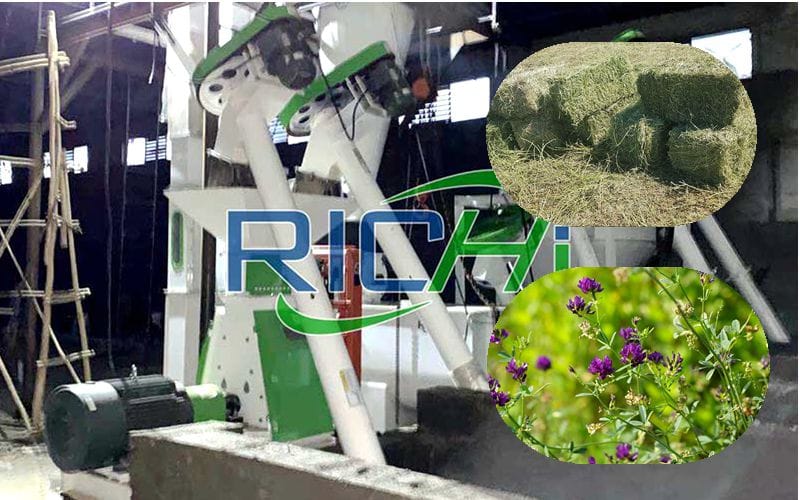
This is where you find all our press releases and news articles.
Forages are classified into grasses; the main source of energy and legumes which are the main source of protein. Legumes are rich in protein and they have the potential to reduce the cost of feeding animals. The use of forage legumes in livestock production systems has increased in the tropics in recent years. Herbaceous forage legumes have been identified as potential supplements for ruminants.
However, seasonal fluctuations results in their low quality and unavailability, which poses a threat to livestock survival. Farmers are faced with the challenges of sourcing adequate feeds for their stock during dry seasons. During this period, the nutritive value of the forages decline while animals are faced with reduced feed intake and loss of weight.Legumes such as Lablab purpureus, Calopogonium mucunoides and Mucuna pruriens can be conserved as silage, hay and pellets to meet the nutritional needs of animals when there is low availability. The major constraint in large scale hay production in the tropics is unreliable weather conditions and poor herbage quality for most of the year. Conservation of legumes as silage is not extensively practiced worldwide because of their high buffering capacity and low concentration of fermentable carbohydrates which limits the quality of their silage.
Conserving of the forage legumes into pellets form reduces the fibre contents and bind the nutrients together which will further improve the intake and digestibility of the animals.hay and pellets to meet the nutritional needs of animals when there is low availability. The major constraint in large scale hay production in the tropics is unreliable weather conditions and poor herbage quality for most of the year. Conservation of legumes as silage is not extensively practiced worldwide because of their high buffering capacity and low concentration of fermentable carbohydrates which limits the quality of their silage.

Forage Grass Feed Pellet Processing Project
Conserving of the forage legumes into pellets form reduces the fibre contents and bind the nutrients together which will further improve the intake and digestibility of the animals.Conservation of legumes as silage is not extensively practiced worldwide because of their high buffering capacity and low concentration of fermentable carbohydrates which limits the quality of their silage. Conserving of the forage legumes into pellets form reduces the fibre contents and bind the nutrients together which will further improve the intake and digestibility of the animals.Conservation of legumes as silage is not extensively practiced worldwide because of their high buffering capacity and low concentration of fermentable carbohydrates which limits the quality of their silage. Conserving of the forage legumes into pellets form reduces the fibre contents and bind the nutrients together which will further improve the intake and digestibility of the animals.
1. Project name: 5000 tons/year forage grass pellet feed processing production line project
2. Project construction site: Inner Mongolia
3. Necessity and feasibility of project construction: Inner Mongolia has a usable pasture area of 20,000 square kilometers. The quality of the pasture is of good quality and middle yield, with an annual output of 1.5 billion kilograms of forage grass. There are more than 2.6 million heads of livestock in the livestock industry. In order to improve the utilization rate of forage, it is imperative to adopt scientific formula, fine processing, produce high nutritional value, fast increase of livestock fertility, and value-added pellet forage, and it is imperative to create a green brand.
4. Project construction content: build a forage grass pellet production line with scientific formula and corresponding raw materials, finished product storage and other auxiliary facilities, with a designed production capacity of 50,000 tons/year.
5. Project investment and fund raising methods: investment of 10 million RMB, sole proprietorship, joint venture, or cooperation are all acceptable.
6. Project market analysis: After the project is put into production, it can realize an output value of 15 million RMB and a profit of 3.75 million RMB.
Investing in forage grass pellet feed processing production line projects is indeed a good choice, and investment in equipment is indispensable when doing investment analysis in the early stage. A complete grass pellet production line includes a lot of equipment, such as grass grinder, grass pellet machine, grass dryer, cooling system, screening and baling system, etc.
The most critical step for forage grass feed pellet processing technology is to regulate the moisture content of raw materials. First, the water content of the raw material must be measured, and then the water should be added till the moisture content reaches the amount required for feed processing. The results showed that the optimum moisture content of legume forage was 14%-16%, and that of gramineous forage was 13%-15%. It is very important for the produced forage grass pellets for sale.
n the process of forage grass production, forage grass pellet making machine is a key equipment. The forage powder is stirred and extruded during the rolling process. Under normal conditions, the temperature of the pellets just coming out of the sieve hole is about 80℃. So they need to be cooled from high temperature to room temperature, the moisture content of the straw powder is generally reduced by 3% ~ 5%. Therefore, the moisture content of the forage grass pellets after cooling is less than 11% ~ 13%. As the water content is very low, it is suitable for long-term storage without moldy deterioration.
Related Articles
Alfalfa Feed Pellet Plant Build Alfalfa Pellet Production Line
Hop Pelletizing Equipment, Pellet Machine For Hops
Richi Machinery exported to the US forage Grass Pellet production line Introduction
Having the right mix of reliable, high-quality pellet machine and pelletizing systems and expert support is essential to your success. Watch how our end-to-end feed pellet plant solutions have helped our customers optimize their performance.
Our customized and future-proofed turnkey pellet plant solutions is designed with you at the core. From vision to reality and beyond, our team stays connected with yours. Giving you peace-of-mind with an expert at your side.

At RICHI, we go beyond project completion. With RICHI Servicee, we’re your dedicated partners in success. Count on us for expert guidance, minimal downtime, and optimized productivity. Choose RICHI for unmatched service and support.



Meet global product demands and quality standards with industry-leading pellet plant design, engineering, equipment, and construction services for pellet processors.


Your Partner Beyond Project Completion
2000+ cases
RICHI is the leading designer, manufacturer and builder of pellet plants in the world, completing over 2000 projects in 140 countries across 6 continents.
Read More
Increase plant productivity, profitability, and safety by integrating high quality equipment into your pellet production line. Over the years, RICHI has become China's top pellet equipment manufacturer. At the same time, RICHI has established valuable partnerships with the world's leading component and raw material manufacturers to bring you the best there is in technology, automation, and efficiency in pelleting plant machinery.

For nearly 30 years, RICHI has been providing best-in-class pellet plant equipment and services to clients across a variety of industries, sizes, and needs. We pride ourselves on the knowledge and skill that each team member possesses – from our technical sales team to our process design engineers. You can count on RICHI Machinery to take your operation to the next level of innovation, quality, and success.
Need help with your pellet manufacturing plant project? Contact us today.
ANIMAL FEED
BIOMASS
WOOD
ORGANIC FERTILIZER
AQUA FEED
CAT LITTER
MUNICIPAL WASTE RECYCLING
SPECIAL PELLET PRODUCTION
RICHI Machinery continues to deliver world class pellet mill equipment, pellet plant engineering and project solutions that add value to our customers in the animal feed, wood waste, agriculture waste, organic fertilizer, cat litter and special pellet products industries. Throughout the years, we RICHI Machinery have built strong brand, becoming industry-leading pellet machine manufacturer. We value integrity, promise quality, and prioritize your success.
Learn MoreWith our expert team, we precisely implement your process engineering requirements in pellet mill and pelletizing plant systems. No matter which industry you’re in – we understand your needs and deliver solutions that meet the highest standards.
At RICHI, quality comes first. Our pellet making machine and related pellet line equipment undergo rigorous quality controls to ensure they meet the highest standards. Rely on products that are durable, safe, and efficient.
With decades of experience in pellet machine and pellet production line production, we have earned a reputation as a trusted partner in various industries. Our expertise allows us to cover a wide range of applications.
Not only do we offer premium pelleting equipment, but we are also experts at designing, building, installing, and maintaining facilities from the ground up. Our expertise is within pellt plant process design, discovering the most efficient, productive, and profitable way to handle your materials in an end-to-end cycle.

Keeping in touch with us is an effective way to solve all your problems. If you have any needs or questions, please leave your contact information, then RICHI technical consultants will send design, quotation, videos to your mailbox. You can also contact us directly via WhatsApp: +86 13838389622
Copyright©2015-2024 by HENAN RICHI MACHINERY CO., LTD. All rights reserved.